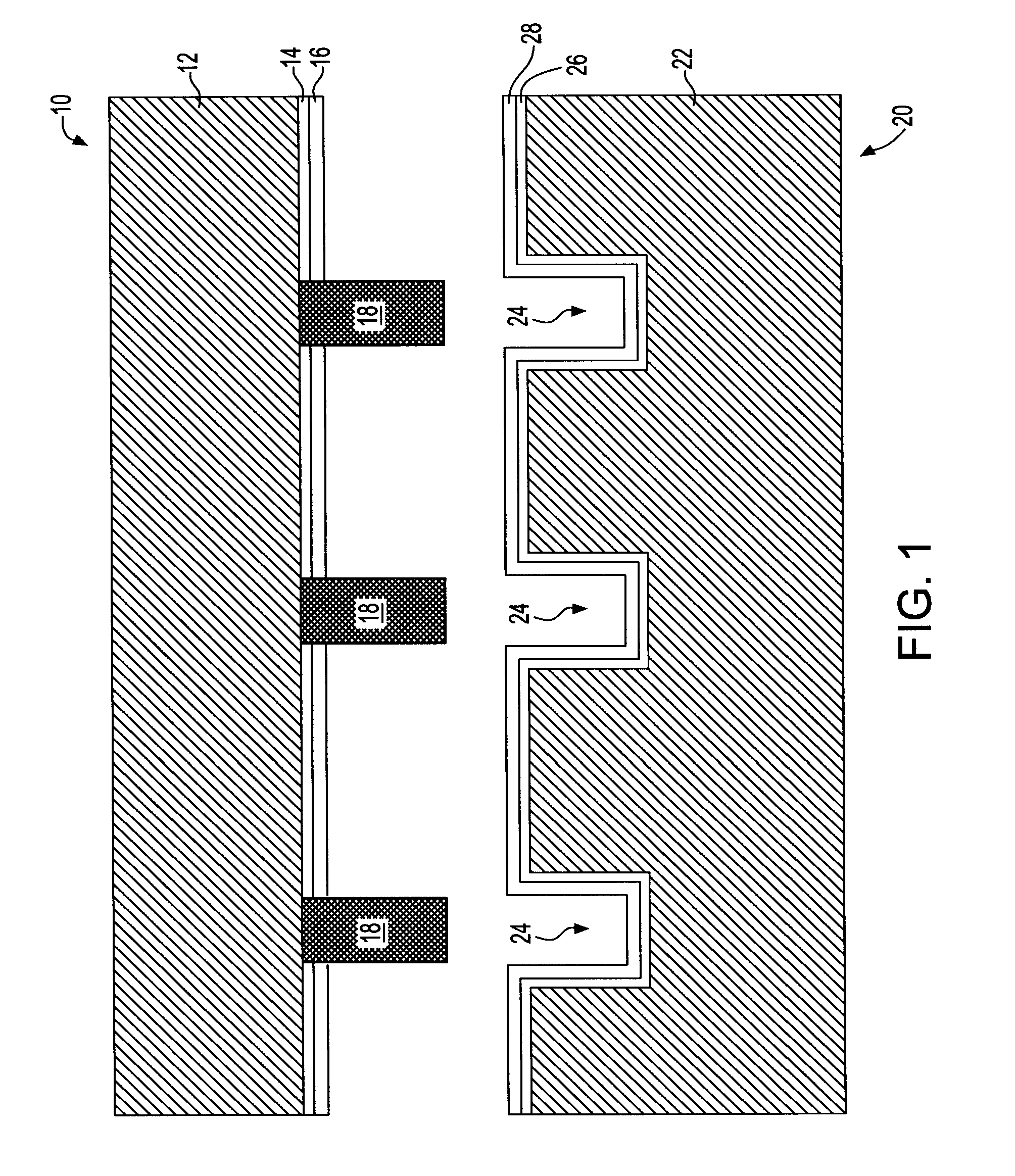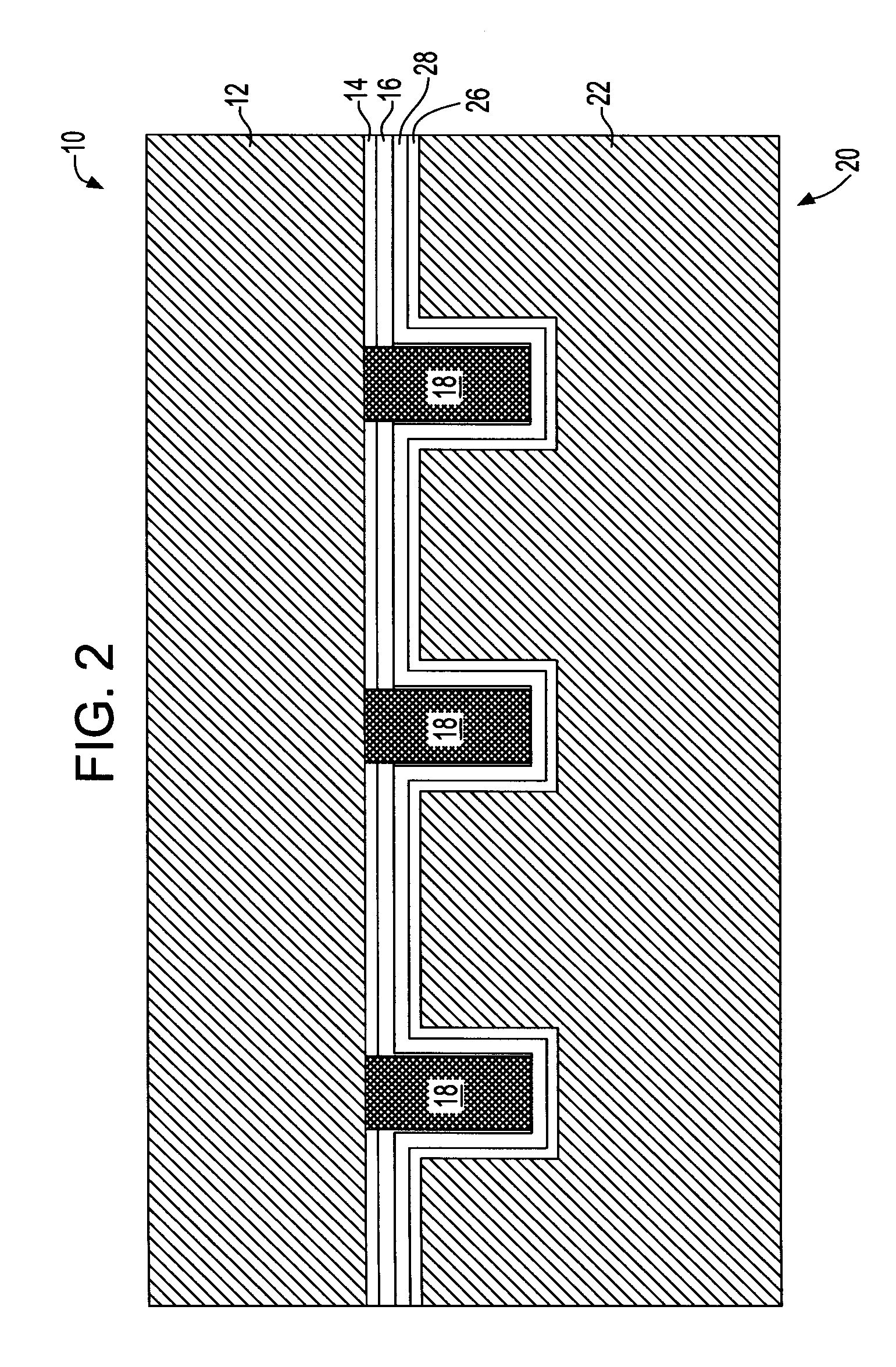Metal filled through via structure for providing vertical wafer-to-wafer interconnection
a metal filling and via technology, applied in the direction of semiconductor devices, semiconductor/solid-state device details, electrical apparatus, etc., can solve the problems of c4s not ensuring the elimination of alpha radiation, interference with the need, undesirable alpha radiation,
- Summary
- Abstract
- Description
- Claims
- Application Information
AI Technical Summary
Benefits of technology
Problems solved by technology
Method used
Image
Examples
first embodiment
[0040] Reference is now made to FIGS. 1-4 wherein the present invention is shown. In this embodiment, the metal studs are designed to fully bud to the bottom of the through via. The term “fully bud” denotes that the metal studs are designed to have a height which ensures that the top surface of the metal studs comes into direct contact with the bottom wall portion of the through via. The bottom wall portion is typically lined with a through via liner which is comprised of a dielectric material and a polyimide.
[0041]FIG. 1 illustrates a first step of the present invention in which a first wafer (hereinafter the device wafer) 10 and a second wafer (hereinafter the attachment wafer) 20 are provided. In accordance with this embodiment of the present invention, the device wafer 10 is the wafer in which at least one semiconductor device (not shown) is formed, while the attachment wafer 20 is a spacer that can be used to absorb alpha radiation from outside sources, such as from C4s and / or ...
second embodiment
[0065] Reference is now made to FIGS. 5A-5C which illustrates another embodiment of the present application. In this embodiment, the metal studs 18 are designed to have a height that does not bud into the bottom wall portion of the through via 24. FIG. 5A shows the initial two wafers 10 and 20, respectively after insertion and joining. FIG. 5B shows the structure after thinning of the attachment wafer 20. FIG. 5C shows the structure that is formed after backside processing with another polyimide coating 30 and metal pad 32. The polyimide coating 30 is formed as described above. It is noted that all the materials and processing details for this second embodiment are the same as described above except that the height of the metal studs is designed to be shorter than that used in the embodiment shown in FIGS. 1-4. This particular embodiment, illustrates that the height of the initial metal studs 18 used in the present invention is not critical in forming a vertical interconnect structu...
PUM
 Login to View More
Login to View More Abstract
Description
Claims
Application Information
 Login to View More
Login to View More - R&D
- Intellectual Property
- Life Sciences
- Materials
- Tech Scout
- Unparalleled Data Quality
- Higher Quality Content
- 60% Fewer Hallucinations
Browse by: Latest US Patents, China's latest patents, Technical Efficacy Thesaurus, Application Domain, Technology Topic, Popular Technical Reports.
© 2025 PatSnap. All rights reserved.Legal|Privacy policy|Modern Slavery Act Transparency Statement|Sitemap|About US| Contact US: help@patsnap.com



